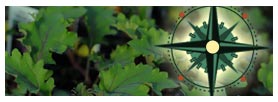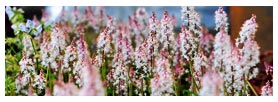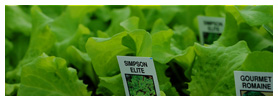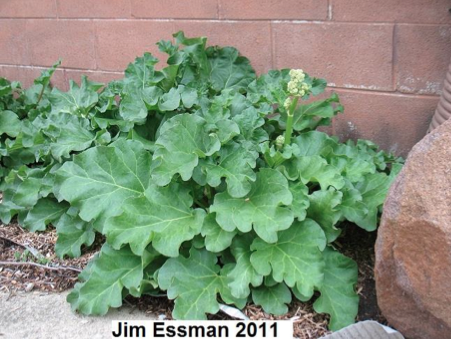

Take a stroll through our greenhouse! Click here to visit our Virtual Tours


Be ready for the cold weather to turn to spring! Read More


McClish's offers FREE planting guides. Read More

NOW OpEN SATURDAYS for MUMS!!
Fall is just around the corner and time to spruce up those planters and beds with our ever popular Jumbo Fall Garden Mums. Available in bright colors and various containers and sizes. We'll look forward to seeing you on Saturdays beginning September 1, 2018 from 9:00 am to 5:00 pm!
What's Happening this week
It is so easy to be anxious this time of year, as the calendar flips to a new month, and not much in the garden to show for it. Every year is different, as this one is for sure. In the meantime around the greenhouse, we are taking advantage of the slower retail days to work in the back, continuing to sow seeds and transplant in anticipation of a busy couple of months retail ahead.
We remind you to stop by our annual Open House on April 28 (always the last Saturday in April) to join in on the fun- Door prizes, specials for the kids and specials for the parents' on plant material and hardgoods. Oh! And plenty of sweet treats & popcorn, that's always a plus. We look forward to seeing you all soon.
Tomato Troubles
By: Jim Essman, Fayette County Master Gardener
We are approaching the last recorded day for frost in our area. Finally the ground is drying out. One of my question this week was about tomatoes. “Is there anything that I can do about my tomatoes wilting leaves in the summer?”
There are several diseases that cause the tomato leaf to wilt. By the time leaf wilt shows up on your plants, it is too late to have much luck treating it. Copper sprays provide effective control, if you start the treatment before the disease shows up. However, these leaf wilts in tomatoes can be reduced or prevented.
Crop rotation is the main prevention. Tomatoes should be rotated so the fungus that causes wilt does not build up in the soil. Try to have a new place for tomatoes every year for at least three years. Other members of the same family as tomatoes should be kept together in the rotation. Those plants include: tomato, potatoes, eggplant, pepper, tomatillos, night shade and petunias. If you plant peppers where the tomatoes were last year, you are not rotating. They are in the same family and are susceptible to the same diseases and pests.
Get the plants off the ground with stakes or cages. That will improve air circulation and drying. Prune out branches at the junction of the leaf and stem (suckers). Prune all of them until you reach the first flowers. Then let them alone.
Mulch will prevent splashing of the spores in the rain. We use newspapers covered with straw. Grass clippings would work also. Mulch will also lessen blossom end rot. That is caused by large fluctuations in wet and dry soil. The result is reducing the plants’ ability to absorb calcium. Some venders will try to sell you calcium to reduce blossom end rot. That will not cure the rot. Mulch will prevent the rot in the first place. Mulch also makes weed control a smaller job.
If there is not one inch of rain during the week, water. Drip irrigation is the best. If you use overhead watering, be done by 10 am. That way the plant surfaces can dry out before dark. My overhead sprinkler puts an inch per hour, measured with a rain gauge. You know the saying: “don’t put your baby or your tomatoes to bed wet.”
LET'S GET STARTED IN THE GARDEN
By: Jim Essman, Fayette County Master Gardener
After a long cold winter and a cold wet spring, the first warm sunny days find us at the local greenhouse or garden store. We shop early for the best selection. We look for the smallest plant in largest container. But we shouldn’t rush to get the young plants into the garden. Get them home and repot into the next largest pot. Maybe the greenhouse or store can help you with a few empty pots. Repotting will give you time to let the ground dry out and get past the last frost date.
Buckeye Yard and Garden Line advises being sure to transplant newly started seedlings before they become root bound in their containers. If they are root bound, they will become stunted. If the plant has become root bound it will be necessary to cut and unwind any roots that encircle the plant, otherwise the roots will never develop normally.
Remember the last frost date for your area. To put tender plants out before that date means you need a plan to protect them when the temperature is going to go
below freezing. The frost-free date across Ohio extends from the last week in April (southern Ohio) to the first ten days or so in May (northern Ohio). Therefore, early planting may be risky. In addition to the risk from another hard frost, plants may also suffer from phosphorus deficiency in cold soil, causing the leaves to take on a purplish discoloration. It is better to plant after the frost free date and allow time for soils to warm before planting tender plants. (from Buckeye Yard and Garden Line)
Buckeyeturf.osu.edu indicates that May 9 is the frost free date for Columbus, although there is a ten percent chance that a frost could occur after that time. Their website list the dates for several Ohio cities.
The soil moisture is another thing to check on. The general rule for deciding when to plant is when the soil is Too dry = hard to till; Too wet = will make clods that will last all summer; Just right = squeeze a hand full and drop, it crumbles.
Before that last frost date, consider planting some cold weather plants like cabbage, broccoli, beets, peas, and radishes.
MOTHER NATURE & PLANTING TIME
By: Jim Essman, Fayette County Master Gardener
We hear it this time of year. “Plant your peas on St. Patrick’s day.” What does a pea seed need to start making a plant for you? It needs the right amount of soil moisture, soil temperature, and sunshine. How can March 17 be correct for Portsmouth, OH, Columbus, OH, and Cleveland, OH? You are right! Any date cannot be correct. Another way to observe the progress of the seasons is by watching the succession of plant first bloom. Every plant needs a particular amount of warming up to come alive in the spring.
Then there are the environmental factors to consider before planting: wet spring dry spring, early spring late spring, cold spring warm spring. What is a pea planter to do? Students of phenology are aware of the order of plant first bloom, which remains the same year after year. The same order exists in the order animals and insects arrive. Animal and plant behavior can be seen appearing parallel to one another. When my red buckeye tree shows its first flowers, it is time to get the humming bird feeders up.
Great grandma had a Common Lilac bush. When it first bloomed, it was time to start the gardening of cool weather plants. That pink coating on the pea seeds is a fungicide that the seed people put on the seeds because they suspect you may plant them too soon. The treatment slows down the rotting of the seeds in the cold damp soil.
My common lilacs are, this year on April 19, about to pop any day now. That is over a month after St. Patrick’s day. If it would just dry up a bit, I could soon get those peas into the ground. Now you know one of the reasons why grandma had a lilac bush. So, if someone gives you a calendar date to expect a biological event to occur, they are not watching or listing to Mother Nature.
ASPARAGUS CARE & FEEDING
By: Jim Essman, Fayette County Master Gardener
Resist the temptation to cut down asparagus fern growth at the end of the season, in the fall. The new growth will stay green until frost, so will continue to provide the crowns with plenty of stored reserves. Although not particularly attractive, dead asparagus fern growth should be left intact overwinter. It catches snow for additional soil moisture and keeps the soil temperature about 5 degrees F cooler in the spring than bare soil with no covering of dead fern. The cooler soil temperature helps delay early emergence of asparagus in the spring, when air temperatures might rise prematurely and fall again, leading to frost damage of emerging spears. In spring, remove the dead ferns from the garden. Eggs of the asparagus beetle can overwinter in the berries.
Asparagus is considered a heavy feeder. In March, apply 1/2 lb. of 10-10-10 fertilizer per 50 feet of row. Mulch the bed with about two inches. In July, stop harvesting and fertilize again.
If you want to get a jump on the weeds, apply approved pre- emergence herbicides 2-3 weeks before spear emergence. Later will work, but not as effective. Preen Garden Weed Control label lists asparagus as a plant around which it may be used, once the plants are established. Preen controls a large list of annual grassy weeds and broadleaf weeds. The label recommends spreading Preen after spreading mulch. The label also recommends reapplying every three months. Since Canadian thistle is a perennial weed, attack it as soon as it emerges. In our beds, this thistle emerges before the asparagus. Therefore, if you stay alert, and are careful where you spray, you may get a jump on the thistle. I use Roundup to kill the plant back to the root.
Asparagus is very drought tolerant and can usually grow without supplemental watering because it sends roots deep. However, if rainfall is less that one inch during the week or when planting, it is beneficial to irrigate the crowns. Otherwise the plants will become stressed and vigorous growth will be impeded. Weed control the first season can be accomplished by hand-hoeing and cultivation. Pre-emergence herbicides can be used during the second year and after.
Rhubarb Rehab
By: Jim Essman, Fayette County Master Gardener
If you are disappointed in the performance of your rhubarb, spring is the time to put the plants into rehabilitation. Rhubarb is called a “heavy feeder”. It requires two applications of fertilizer each year for good growth and continued production. Fertilize each plant with a handful of a 10-10-10 fertilizer when it first starts leafing out in the spring. A midsummer fertilizer application, around July 1, will also benefit these vigorous plants. Mulch added, now that the soil has thawed, will moderate the soil temperatures, reduce weed competition, and conserve soil moisture. Spread about three inches of bark, compost, straw or old hay around the plants.
From the third year on, rhubarb is harvested in late May and through June in Ohio. Stop harvesting leafstalks July 1, or when the plant begins to produce slender stalks, a sign that its reserves are low. Never harvest more than one-third to one-half of the plant’s stalks, in order to preserve enough foliage to sustain the crown. The stalks are most flavorful when fairly young, so harvest them soon after the leaf expands. Harvest by grasping each leafstalk near the base and pulling it slightly to one side. Stalks can also be cut with a knife.
Flowering is part of the reproductive phase that leads to the production of fruit and seed. But from the gardener's perspective, the production of flowers, fruit and seed wastes the plant's resources, which could be better spent on producing edible stalks or storing carbohydrates to use for the coming season. And if allowed to mature seed, the resulting seedling offspring are often less desirable than the mother plant, which we paid good money to buy as a named cultivar. So, cut the flower stalk off at its bottom and send it to the compost bin.

Pruning Brambles
By: Jim Essman, Fayette County Master Gardener
If not pruned, brambles will become a tangled mess with small fruit. Brambles include black and purple raspberries, and blackberries. Last summer’s canes produced fruit and died. They should be removed in March. The fruit this summer will be on the canes that grew last summer. Blackberry canes should be thinned out in the spring. Retain strong canes, spaced six to eight inches apart. Rows should not be much wider at the base than 18 to 24 inches or picking will be difficult.
Black and purple raspberry canes are located in clusters or "hills" where the original plants are set. Remove canes less than half an inch in diameter at the base in the spring. Usually, no further thinning is needed as plants should be able to support as many vigorous canes as they produce. Because yields depend on the number of strong canes, conditions should be made favorable enough so that from four to six strong canes are produced per hill.
The laterals, or side branches growing on the canes as a result of summer tipping, may grow quite long (three feet or more). Most of the buds on the laterals are fruit buds. If all were left, there would be so much competition for water and nutrients that fruit size would be small. Therefore, laterals must be headed back to thin the fruit crop. Head back laterals in the early spring after the extent of winter injury can be determined but before the buds swell and grow.
With black raspberries, eight to 10 buds (stems eight- to 12-inches long) per lateral are usually enough. Purple raspberries are somewhat more vigorous than blacks, and a few more buds per lateral can be left. The length of laterals in both purple and black raspberries can be increased somewhat if canes have only two to three laterals and if there are only a few canes per hill or when irrigation is available.
Erect blackberry cultivars differ in their fruiting habits. In some cultivars, the fruit clusters occur well out on the laterals; in others, they are close to the main stem, and in others they are well distributed over the lateral. Generally, at least half of each lateral may be removed. The erect blackberry should be handled similar to the black raspberry.
Thornless blackberries that have not been damaged by cold temperatures need to have all laterals removed within 18 to 24 inches of the soil. These low-positioned laterals will produce fruit that will not be harvested or will be covered with soil. Next, head all laterals back to 12 to 18 inches. If the main shoot is excessively long, it can be cut back to give space to other plants. Thin out small diameter canes and leave four to six canes per plant. If the thornless blackberries have been damaged by cold temperatures, remove all dead wood. If there are only three or four laterals that show signs of life, these may be headed back to three to four feet.

